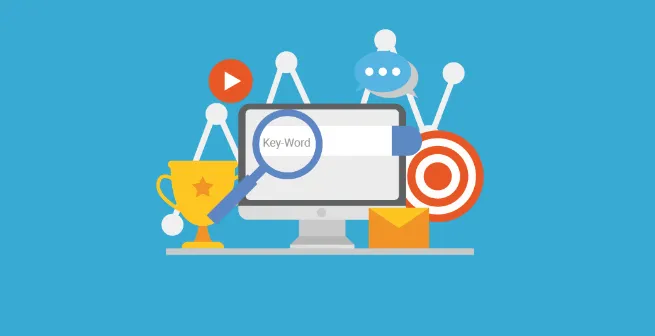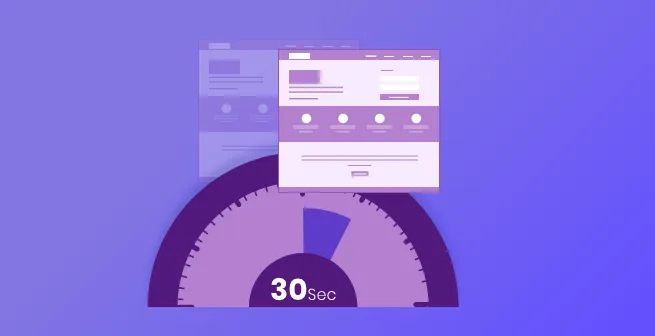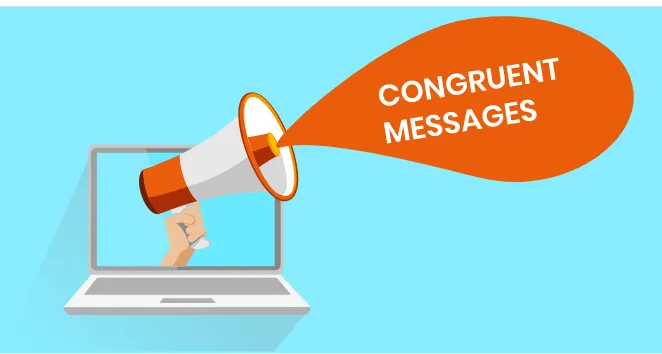Creating an SEO landing page or a PPC landing page is not an easy task. Each of them serves a different purpose. This article will introduce you to landing pages and fundamentals of making SEO and paid search landing pages to achieve better results.
When your customer clicks on your link, whether from an email, web-search, social media post or advert, the page they land on is referred to as a landing page. This is a standalone page that calls the consumer to a particular action, such as buying a product or signing up for a service.
Typically, a landing page is created to achieve a goal. A landing page is not your website and should not contain every element of information about your business - instead, it should feature a select amount of data that the visitor can use to follow through on the given action.
In the complex world of digital marketing, one landing page may not be enough. Your business has multiple goals and should, therefore, have independent landing pages to meet these goals.
Related Article: How Many Landing Pages Do I Need On My Website?

In particular, businesses often make the mistake of using the same landing page for Search Engine Optimization and Pay-Per-Click marketing campaigns. To understand this error, one must first understand some basic digital marketing jargon:
PPC (Pay-Per-Click) Campaign - a type of marketing campaign in which the advertiser pays a small fee each time a customer clicks on their advertisement and is redirected to their post-click landing page. Essentially, you are paying for the consumer to visit your site.
SEO (Search Engine Optimisation) Campaign - a method whereby you attempt to ensure that, when a consumer searches a phrase related to your business, that your website is the first that pops up on Google, making the consumer more likely to click on the link.
SEM (Search Engine Marketing)
CTA (Call To Action) - the action you would like the consumer to take. Examples of this are buying a product or signing up for more information.
Conversion Rate - the number of visitors that carry out the CTA as a percentage of total visitors. For example, if your landing page asks consumers to sign up for a newsletter and, out of 1000 visitors, 400 sign up, you will have a 40% conversion rate. Obviously, the goal here is to maximise your conversion rate.
SERP (Search Engine Results Page) - the page which appears after a user types a query into a search engine.

A landing has a particular and clear focus to achieve the objective it has to offer less friction. Additional information such as external and internal links, social media links, and non-pertinent information is not included on your landing page, as it may distract the consumer from the CTA and decrease your conversion rate.
Your website, however, typically has twenty or more pages, multiple links, both internal and external, as well as social media links. This allows the consumer to become familiar with your brand, whereas the aim of a landing page is for the consumer to complete the call to action.

Clear and Concise Copy - A landing page should contain three key elements - the headline, the offer and benefits and the CTA.
Headline - What is the purpose of this landing page? For example, ‘Get Discount Plane Tickets, with Premium Club Membership.’
Offer and Benefits - What are you offering the consumer, and what are the added benefits of this? Continuing with the above example: If you pay a $10 monthly subscription fee, you will receive a 15% discount on all flights with XXX airlines for the year. Added benefits could include free entry to XXX air lounges as well as priority boarding.
CTA - What exactly do you want your consumer to do? What steps must they follow? The example here would be “Click here to subscribe”
Media - Pictures and videos are great ways of showing your product in action. Media allows the consumer to engage with your products in a way that text cannot. It is essential, however, that these additional media items remain on message and do not distract clients from the CTA.
Emphasise Trust Signals - Trust signals are invaluable as they assure your prospective client that you are not a fraudster. Landing page social proof such as testimonials provides customers with the ease of knowing that other people have used your services and are satisfied. Be careful not to link directly to social media as this may distract the client from CTA follow through. It is vital that any testimonials are genuine, as this is easily picked up by clients.
In the context of SEO (Search Engine Optimization), a landing page refers to a specific web page that is designed and optimized to be the entry point for visitors who arrive at a website, product, service, or offer through a search engine. It is the page where users “land” after clicking on a search engine result after typing in a specific search term.
Landing pages are often created with the purpose of converting visitors into customers or achieving a specific marketing goal. They typically focus on a single topic or offer and provide relevant and compelling information to encourage visitors to take a desired action, such as making a purchase, signing up for a newsletter, filling out a form, or downloading an e-book. So combining SEO with landing pages would mean that you secure the top search results without paying for ads and also boost conversions, all through organic traffic.

While the primary goal of the landing page - is to get a customer to fulfil the CTA - remains the same, an SEO landing page is intrinsically different from its PPC counterpart. When key phrases connected to your business are searched in a search engine such as Google, the goal is that your business is on the top of the list, ensuring that the maximum amount of potential customers are redirected to your landing page.
This is a more organic way of attracting customers - as opposed to the paid search landing page whereby you have paid to redirect the consumer to your landing page.
Every search engine has its own algorithm to produce its SERP - and this algorithm is very often a closely guarded secret - as is the case with Google. There are, however, certain factors we know and can use to our advantage to propel our SEO campaigns.
The results of landing page SEO can vary depending on various factors, including the competitiveness of the industry, the specific keywords targeted, the quality of existing content, and the level of optimization required. It is a job better done by professionals.
You can start off by including the below best practices for landing page SEO in your marketing plan.

Search engine algorithms pick up key phrases on your SEO landing pages and, depending on how closely these phrases are related to the search; your page is promoted up the SERP.
The study of what target keywords consumers use when searching for your product is therefore essential in optimising your SEO landing page. Incorporating these keywords and phrases in your SEO landing pages is therefore vital. These are the critical sections in which to include keywords:

The title of your SEO landing page that appears as a blue link on the SERP.
Meta Description - the short blurb about your page that appears underneath the title tag on the SERP
Media File Names - the file names attached to the images on your landing page. It is important to remember that search engines do not directly analyse the image and video files that appear on your landing page but rather just the title of the data. It is therefore essential to incorporate keywords into these titles.
Headers - when using HTML, up to six title tags can be used to describe different headings on your landing page.
Forms - Forms are a key element on your landing pages, and if you notice potential leads spending too much time fidgeting with the form, or see them pause at one particular field, you will know that it requires more attention.
Copy - this is the writing that appears on your page and perhaps the most obvious place to incorporate keywords and phrases. To avoid overwhelming length, dividing copy into divs that the consumer can expand at will allows you to keep the length reasonable, and incorporate more keywords without overwhelming the user with too much writing.
Related Article: Landing Page Subdomains Explained with Examples
Due to the vast number of keywords and phrases a person might use when doing a web search, companies may find that several SEO landing pages each addressing a different set of keywords is required.

When another website or company shares a link to your SEO landing page on their website, this is called backlinking. This promotes your page to higher places on the SERP.
There are several ways in which you can secure backlinks, including creating viral content or making business connections with other companies and industry influencers. The more people that share your link, the higher your page will appear on the SERP. To enhance your website’s visibility and improving its SEO performance, integrating backlinks strategically is critical. Backlinks can elevate a site’s SERP positioning by driving significant traffic organically. For those looking to refine this process, following a robust backlink management guideline, like conducting regular audits and carefully evaluating link sources, might offer optimum results.

The faster your page loads, the higher it is promoted by search algorithms. This has even been confirmed by ever-secretive Google. Google Pagespeed Insights is a tool you can use to analyse the speed of you to see if it meets Google’s requirements.
Learn more: How To Increase Page Speed Of Your Websites and Landing Pages?
Landing page for SEO is made of small things. Even your URLs. Including the main keyword in your page’s URL is beneficial for landing page SEO. It enhances relevance, improves user-friendliness, highlights the keyword in search results, aids in anchor text optimization, and contributes to a well-structured website hierarchy. It helps search engines understand the page’s topic, makes the URL more intuitive for users, and reinforces the match between the search query and the page’s content.
Additionally, it can encourage others to use the keyword as anchor text when linking to your page. However, it’s important to maintain a concise, descriptive, and user-friendly URL structure without excessive keyword stuffing.
You can use Google search console to understand which SEO landing pages are organically ranking for the keywords you want to target. To get a full grasp of Search Engine Marketing, we would recommend checking out the Google Search Console for organic search health.

To understand how and which pages rank organically, login to Google Search Console and click on Performance in the left menu and finally click on the keyword. You should be able to see the pages ranked for the keyword under the Pages tab.
If you don’t see the expected SEO landing page you wanted to rank, it could mean you need to optimise the landing page further or maybe ask your Search engine optimisation analyse to optimise it to drive traffic.
In scenarios, where you have a dedicated landing page for Pay-Per-click ads and do not want Google or other search engines to index it, you can easily add a property in your robots.txt file. If you use a landing page builder like Unbounce, you can switch on the setting within the page properties so Google doesn’t index it.

Ahrefs is also an excellent tool which can show the pages ranking for your targeted keywords. Click Rank Tracker and located the keyword you want to analyse.

In this example, we rank our Unbounce Landing Page designer page for the keywords: Unbounce Landing Page Designer. That’s precisely what we expect too. You can quickly diagnose if Google is relating the right keywords to your SEO Landing Pages.
How to Optimize Landing Pages for SEO?
Now, you might already have a landing page and think SEO will not work. But it just might. You can use the same above best practices to implement SEO for your present landing pages. And the best part is you can start optimizing your landing page for search traffic any day.

As a business, it is essential to remember that you have paid directly for the consumer to visit your paid search landing page. It is, therefore, crucial to maximising the conversion rate and thus, your return on investment.
A business cannot merely direct the consumer to a paid search landing page and expect conversions to happen magically. In SEM, it is essential to optimise the landing page to ensure maximum conversion rates.

The person who sees and clicks on your ad should be directed to a relevant landing page. This is probably the prospective client’s first association with your brand, and it is vital that you make a good impression.
If your ad is about discount earphones and your landing page is entitled “Wholesale Electronics” the user may click back, thinking they have clicked on the wrong link or been redirected to the wrong sales page. This negatively impacts your conversion rate and increases your cost per click.
It is essential that the Pay-Per-Click ad and the landing page give congruent messages and that your branding is consistent.

If your PPC advert makes a promise to the consumer, it is vital that your landing page follows through. If not, the consumer will not have trust in your brand and may not convert. In a world where online scams are so prevalent, it is imperative that your customer trusts your brand.
A good example would be an advert promising a Free! Audiobook upon subscription to a weekly newsletter. If the consumer clicks on the link and the landing page then say, “Audiobook is $9.99 when you sign up for our newsletter”, you have broken your promise and likely lost your consumer’s trust.
While ad headings do not have to be identical to landing page headings, they should be as similar as possible to assure the consumer that they are in fact in the right place. In this way, having a unique landing page for different Pay-Per-Click ad groups may be helpful in maintaining consistency.
Adwords Quality Score and Facebook Relevance Score score your ad and landing pages in terms of relevance, generally by monitoring keywords and user behaviour once they have clicked on your advertisement - the higher you ad scores, the better the placement your ad will receive (i.e. the higher placement on SERP or prime position on webpages), as well as a higher frequency of advertisements.
Google Ads uses Ad score to calculate how much each click will cost. One of the metric in Ad score is ‘Landing Page Experience’ score. To improve the landing page experience score, you can include the paid keywords in the page title, description and headings.

For both PPC and SEO landing pages, whether related to SaaS or any other industry , after a customer has fulfilled the CTA, it is good practice to redirect them to a thank-you page. This page is multifunctional and adds up to the user experience. Not only do you articulate your gratitude to the client for their interest in your company (which is essential in building customer loyalty) but it also provides you with an opportunity to share information that was not on the landing page.
Links to your company website and social media pages may serve here to allow the to target audience continue exploring and learning about your business, products, and services.

The critical difference between Pay-Per-Click and SEO-optimized landing pages is the intention of both the business and the consumer. With a paid search landing page, you have paid directly for the customer to visit your landing page and want them to take definitive action. The consumer, in turn, has clicked on your ad because they are interested in your company and your product.
The SEO landing page is a more organic way of attracting web-traffic and allows the consumer to explore your company and services in relation to their keywords. Although there is still a CTA, it is more general and not as conversion-driven as the paid search landing page.

At Apexure, we ensure that you have access to all types of landing pages you want to build for your various marketing campagins. We have in-house team and partners that can help you build high-converting SEO-friendly landing pages, whether you are targeting paid or organic traffic.

Drive More Sales or Leads With Conversion Focused Websites and Landing Pages
Get Started.webp)
SaaS demo best practices ensure that your meetings turn into conversions. When a lead books a SaaS demo,...
Every B2B SaaS lead generation starts with cold outreach. But is it worth sticking to one strategy when...
Get quality posts covering insights into Conversion Rate Optimisation, Landing Pages and great design